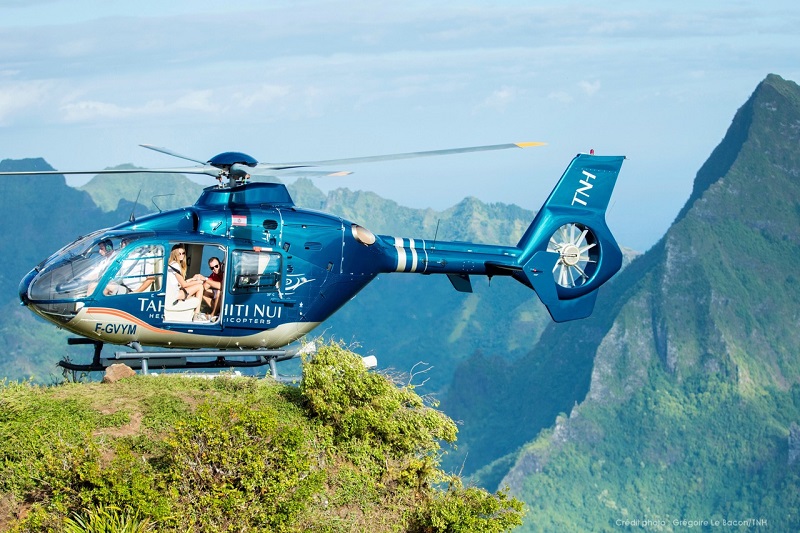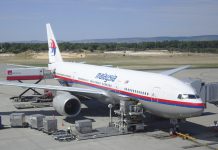
Much of the beauty and natural wonder of French Polynesia’s main island, Tahiti, may not be immediately recognizable to visitors.
That’s because the island’s upper slopes, with bizarre rock formations and lush tropical volcanic mountains rising up to 2,241 meters out of the endless South Pacific, are almost inaccessible and hardly visible from sea level.
The more popular islands, nearby Moorea and tourist magnet Bora Bora, are extremely scenic in a more obvious way.
So this is natural territory for helicopter operations, especially with a captive audience of high-spending luxury tourists.
That’s the strategy behind Tahiti Nui helicopters, founded in July 2018 and jointly owned by the national long haul carrier and French-Swiss helicopter market leader HBG, with each holding 50 percent.
READ: How the clash of airline titans boiled over in Tahiti.
The company, based at Papeete’s Faa’a Airport, opposite the commercial aircraft apron, is currently operating three helicopters, two Airbus H135s (formerly EC135) and one H125 (formerly AS350-B2), also called “Écureuil” (squirrel).
“We have done 250 flights a month on average in our first year”, Air Tahiti Nui Helicopters COO Laurent Touvron in an interview with AirlineRatings.
“In August 2019 we had a very good month with 915 passengers, July was a normal month when we carried 650 clients.”
About 70 percent of operations have so far been tourist-related, while 10 to 15 percent were flown for medical reasons.

The bestseller among the many itineraries offered is the 20-minute sightseeing flight over Tahiti, costing $A1.220 ($US838), followed by aerial sightseeing over Moorea.
The company has lowered its prices by 10 percent recently to attract more customers. A ten-minute flight for up to five passengers now starts at about 650 AUD ($US447).
Many places on the islands can be reached by helicopter and the only company offering helicopter services in French Polynesia has access to no less than eight landing sites on Bora Bora, six (plus the airport) in Tahiti and four in Moorea.
Public transport, even by scheduled fixed-wing local airline Air Tahiti, can be lengthy or circuitous for specific itineraries so island transfers are a popular motivation to hire a helicopter.
Instead of spending two to three hours in total travel time to go on a scheduled ATR
flight from Bora Bora to neighboring Raiatea, it can be done in just ten minutes by chopper, though costing a small fortune of about $A1,630 ($US1120).
The number of passengers that can be carried often also depends on the amount of bulky luggage the tourists are hauling with them.
Island transfers are generally possible within the central Society islands archipelago and to or within the Tuamotu archipelago, with advance notice requirements depending on the distance to cover.
“For the islands of Tuamotu located further away, we need one week advance notice to be able to deliver fuel,” Touvron points out.
Only the archipelago of the Marquesas islands, furthest away from Tahiti, can’t be reached yet by helicopter.
“We lack just five to ten minutes of endurance in the range of our current fleet,” Touvron notes with regret.

The company also offers more challenging and inventive itineraries, starting with tours to the heart-shaped Tupai atoll near Bora Bora with a beach landing or touchdown on steep mountain tops either on Tahiti or Moorea.
New activities include heli-skydiving, heli-golfing or even heli-biking.
“We hope for a fourth helicopter soon, which will be contracted to the government for medevac flights,” Touvron says.
While the company employs four pilots now, that will mean hiring one or two new recruits.
Ultimately the idea is to grow the fleet to up to six aircraft.
And if you wonder if newly delivered helicopters are ferried to French Polynesia from Europe by air – they are not, rather transported by cargo ship.
“Such a ferry flight would take 45 days”, says Touvron.
Sea transport seems the more sensible, cheaper and less risky option.























